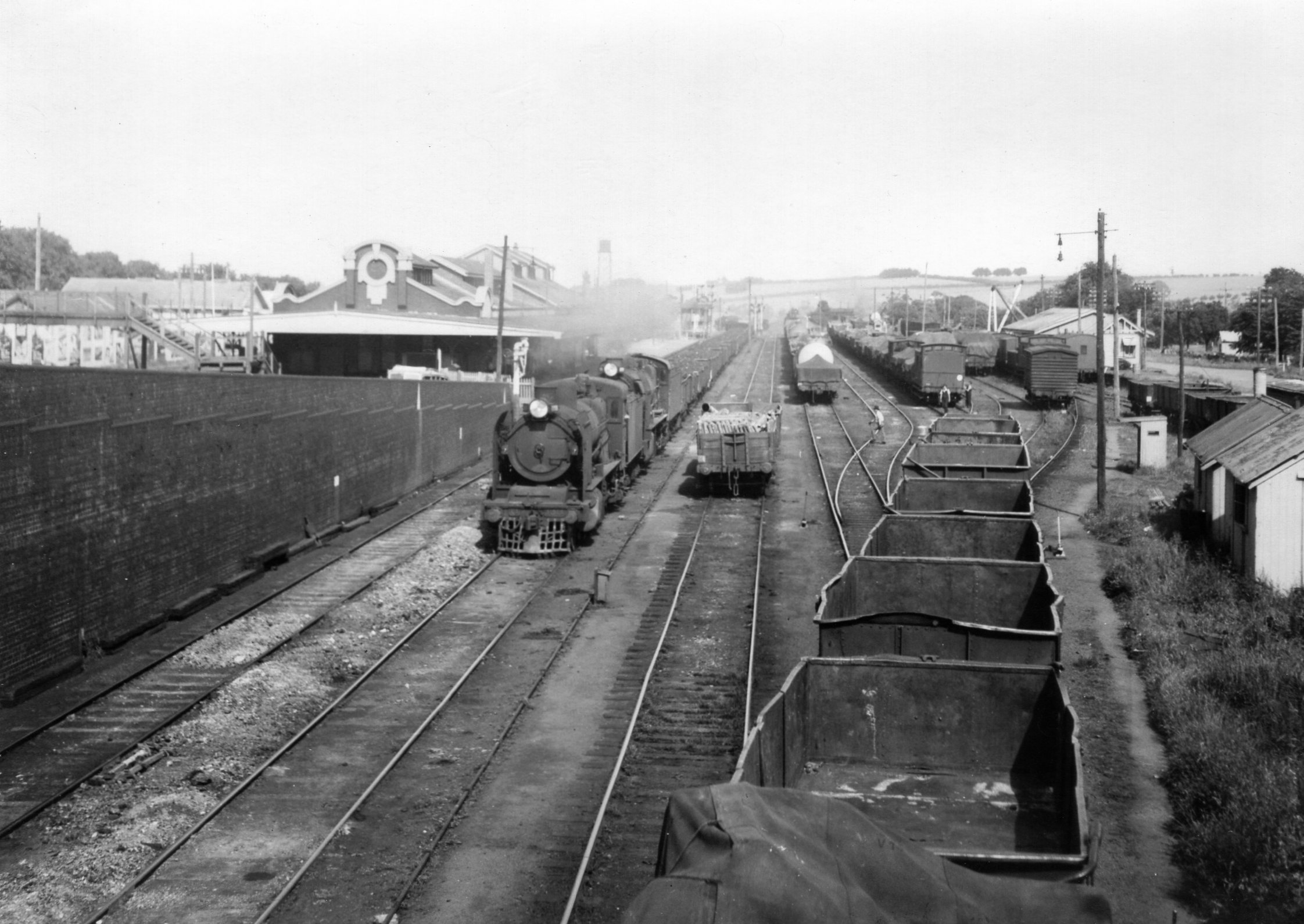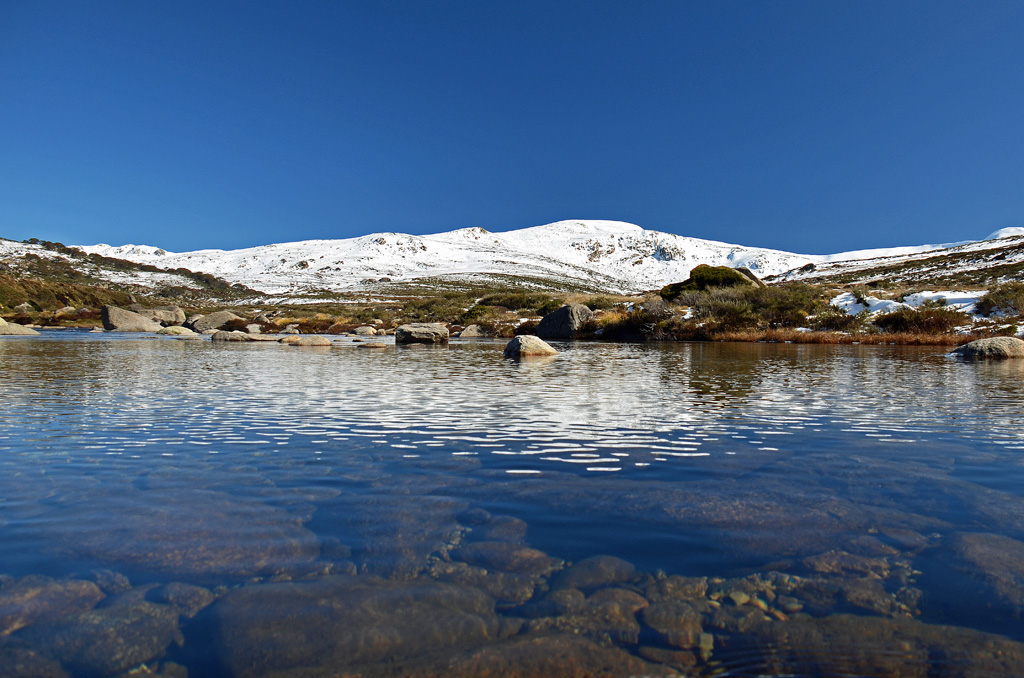|
Orbost Railway Station
Orbost Railway Station was located in Orbost, Victoria and was the terminus of the Orbost railway line. To save on the costs of a bridge over the Snowy River The Snowy River is a major river in south-eastern Australia. It originates on the slopes of Mount Kosciuszko, Australia's highest mainland peak, draining the eastern slopes of the Snowy Mountains in New South Wales, before flowing through the ..., which had highly variable levels, the station was located on the west side of the river, even though the town of Orbost was on the east side. History Orbost Railway Station was opened on Monday 10 April 1916, and closed on 24 August 1987. Little evidence remains of the station itself, other than bits of the concrete face of the passenger platform. Bridges Part of the former line were the Snowy River Floodplain Railway Bridges, two lengthy low-level bridges forming part of a causeway over the river flats, leading towards the station site. One bridge is 770 metres long and ... [...More Info...] [...Related Items...] OR: [Wikipedia] [Google] [Baidu] |
Orbost Railway Line
The Gippsland line (also known as the Orbost railway line) is a railway line serving the Latrobe Valley and Gippsland regions of Victoria, Australia. It runs east from the state capital Melbourne through the cities of Moe, Morwell, Traralgon, Sale and terminating at Bairnsdale. Prior to its dismantling in 1994, the line extended to Orbost. The dismantled section now comprises the East Gippsland Rail Trail, a shared bicycle, walking, and horseriding track. Services Metro Trains Melbourne operates suburban passenger services along the inner section of the line as the Pakenham line, while V/Line services operate as the Traralgon and the Bairnsdale lines. Freight services also use the line, operated by Qube Holdings. History Rail lines were built to Gippsland in the 1870s and initially played a crucial role in developing agricultural industries in Gippsland as well as tourism. It also played a crucial role in the development of coal mining in the Latrobe Valley in ... [...More Info...] [...Related Items...] OR: [Wikipedia] [Google] [Baidu] |
Flinders Street Railway Station
Flinders Street railway station is a train station located on the corner of Flinders Street, Melbourne, Flinders and Swanston Street, Swanston streets in the Melbourne city centre, central business district (CBD) of Melbourne, Victoria (Australia), Victoria, Australia. Opened in 1854, the historic station serves the entire Public Transport Victoria, metropolitan rail network, as well as some country services to eastern Victoria. Backing onto the Yarra River in the heart of the city, the complex includes platforms and structures that stretch over more than two whole city blocks, from east of Swanston Street nearly to Market Street, Melbourne, Market Street. Flinders Street is served by Metro Trains Melbourne, Metro's List of Melbourne railway stations, suburban services, and V/Line regional services to Bairnsdale V/Line rail service, Gippsland. It is the busiest station on Melbourne's metropolitan network, with an average of 77,153 daily entries recorded in the 2017/18 fiscal yea ... [...More Info...] [...Related Items...] OR: [Wikipedia] [Google] [Baidu] |
Bairnsdale Railway Station
Bairnsdale railway station is the terminus of the Gippsland line in Victoria, Australia. It serves the city of Bairnsdale, and it opened on 8 May 1888.Bairnsdale Vicsig Until 1987, the line continued to . This has been redeveloped as the East Gippsland Rail Trail, a shared bicycle, walking, and horse-riding track. History The railway line opened to Bairnsdale in 1888, and from 1916, continued through to ...[...More Info...] [...Related Items...] OR: [Wikipedia] [Google] [Baidu] |
List Of Closed Railway Stations In Victoria
This is a list of former railway stations and railway lines in Victoria, Australia. Many of these stations and lines have been abandoned or demolished. There is a strong desire by communities to have many of these re-opened to better link Regional Victoria to the state capital Melbourne. Public transport has become increasingly popular in the 21st century for convenience and affordability reasons. For closed railway stations in suburban Melbourne, see List of closed railway stations in Melbourne. Mildura line Originally withdrawn on 12 September 1993. Once served by ''The Vinelander'' service, the line branches from the Serviceton line at Ballarat. *Dunolly * St Arnaud * Donald *Birchip * Ouyen * Red Cliffs *Irymple * Mildura Leongatha line The passenger service was withdrawn on 24 July 1993, but the Dandenong to Cranbourne section was later electrified and became part of the Melbourne suburban rail network in 1995. *Cranbourne East * Clyde *Tooradin *Koo Wee Rup *La ... [...More Info...] [...Related Items...] OR: [Wikipedia] [Google] [Baidu] |
Orbost, Victoria
Orbost is a historic early settlers town in the Shire of East Gippsland, Victoria, east of Melbourne and south of Canberra where the Princes Highway crosses the Snowy River. It is about from the surf and fishing seaside town of Marlo on the coast of Bass Strait and 217 km drive to Hotham Alpine Resort. Orbost is the service centre for the primary industries of beef, dairy cattle and sawmilling. More recently, tourism has become an important and thriving industry, being the major town close to several national parks that are between the east access to either the surf or the snow, including the famous Snowy River National Park, Alpine National Park, Errinundra National Park, Croajingolong National Park and Cape Conran Coastal Park. The establishment of the Sailors Grave Brewery has also brought significant tourism to the area with its multiple festivals throughout the year. Cycling and canoeing have also become major tourist attractions drawing people worldwide to the a ... [...More Info...] [...Related Items...] OR: [Wikipedia] [Google] [Baidu] |
Terminal Station
A train station, railway station, railroad station or depot is a railway facility where trains stop to load or unload passengers, freight or both. It generally consists of at least one platform, one track and a station building providing such ancillary services as ticket sales, waiting rooms and baggage/freight service. If a station is on a single-track line, it often has a passing loop to facilitate traffic movements. Places at which passengers only occasionally board or leave a train, sometimes consisting of a short platform and a waiting shed but sometimes indicated by no more than a sign, are variously referred to as "stops", " flag stops", " halts", or "provisional stopping places". The stations themselves may be at ground level, underground or elevated. Connections may be available to intersecting rail lines or other transport modes such as buses, trams or other rapid transit systems. Terminology In British English, traditional terminology favours ''railway stat ... [...More Info...] [...Related Items...] OR: [Wikipedia] [Google] [Baidu] |
Snowy River
The Snowy River is a major river in south-eastern Australia. It originates on the slopes of Mount Kosciuszko, Australia's highest mainland peak, draining the eastern slopes of the Snowy Mountains in New South Wales, before flowing through the Alpine National Park and the Snowy River National Park in Victoria and emptying into Bass Strait. While the river's course and surroundings have remained almost entirely unchanged, the majority of it being protected by the Snowy River National Park, its flow was drastically reduced in the mid 20th century, to less than 1% (as measured at Jindabyne), after the construction of four large dams (Guthega, Island Bend, Eucumbene, and Jindabyne) and many smaller diversion structures in its headwaters in New South Wales, as part of the Snowy Mountains Scheme. The river has been immortalised in cultural folklore through the poem '' The Man from Snowy River'', written by 'Banjo' Paterson in 1890, which formed the basis of many subsequent works ... [...More Info...] [...Related Items...] OR: [Wikipedia] [Google] [Baidu] |
Causeway
A causeway is a track, road or railway on the upper point of an embankment across "a low, or wet place, or piece of water". It can be constructed of earth, masonry, wood, or concrete. One of the earliest known wooden causeways is the Sweet Track in the Somerset Levels, England, which dates from the Neolithic age. Timber causeways may also be described as both boardwalks and bridges. Etymology When first used, the word ''causeway'' appeared in a form such as "causey way" making clear its derivation from the earlier form "causey". This word seems to have come from the same source by two different routes. It derives ultimately, from the Latin for heel, ''calx'', and most likely comes from the trampling technique to consolidate earthworks. Originally, the construction of a causeway utilised earth that had been trodden upon to compact and harden it as much as possible, one layer at a time, often by enslaved bodies or flocks of sheep. Today, this work is done by machines. The ... [...More Info...] [...Related Items...] OR: [Wikipedia] [Google] [Baidu] |
Railway Stations In Australia Opened In 1916
Rail transport (also known as train transport) is a means of transport that transfers passengers and goods on wheeled vehicles running on rails, which are incorporated in tracks. In contrast to road transport, where the vehicles run on a prepared flat surface, rail vehicles (rolling stock) are directionally guided by the tracks on which they run. Tracks usually consist of steel rails, installed on sleepers (ties) set in ballast, on which the rolling stock, usually fitted with metal wheels, moves. Other variations are also possible, such as "slab track", in which the rails are fastened to a concrete foundation resting on a prepared subsurface. Rolling stock in a rail transport system generally encounters lower frictional resistance than rubber-tyred road vehicles, so passenger and freight cars (carriages and wagons) can be coupled into longer trains. The operation is carried out by a railway company, providing transport between train stations or freight customer facili ... [...More Info...] [...Related Items...] OR: [Wikipedia] [Google] [Baidu] |
Railway Stations Closed In 1987
Rail transport (also known as train transport) is a means of transport that transfers passengers and goods on wheeled vehicles running on rails, which are incorporated in tracks. In contrast to road transport, where the vehicles run on a prepared flat surface, rail vehicles (rolling stock) are directionally guided by the tracks on which they run. Tracks usually consist of steel rails, installed on sleepers (ties) set in ballast, on which the rolling stock, usually fitted with metal wheels, moves. Other variations are also possible, such as "slab track", in which the rails are fastened to a concrete foundation resting on a prepared subsurface. Rolling stock in a rail transport system generally encounters lower frictional resistance than rubber-tyred road vehicles, so passenger and freight cars (carriages and wagons) can be coupled into longer trains. The operation is carried out by a railway company, providing transport between train stations or freight customer facil ... [...More Info...] [...Related Items...] OR: [Wikipedia] [Google] [Baidu] |
Transport In Gippsland (region)
Transport (in British English), or transportation (in American English), is the intentional movement of humans, animals, and goods from one location to another. Modes of transport include air, land (rail and road), water, cable, pipeline, and space. The field can be divided into infrastructure, vehicles, and operations. Transport enables human trade, which is essential for the development of civilizations. Transport infrastructure consists of both fixed installations, including roads, railways, airways, waterways, canals, and pipelines, and terminals such as airports, railway stations, bus stations, warehouses, trucking terminals, refueling depots (including fueling docks and fuel stations), and seaports. Terminals may be used both for interchange of passengers and cargo and for maintenance. Means of transport are any of the different kinds of transport facilities used to carry people or cargo. They may include vehicles, riding animals, and pack animals. Vehicles may in ... [...More Info...] [...Related Items...] OR: [Wikipedia] [Google] [Baidu] |



.jpg)



